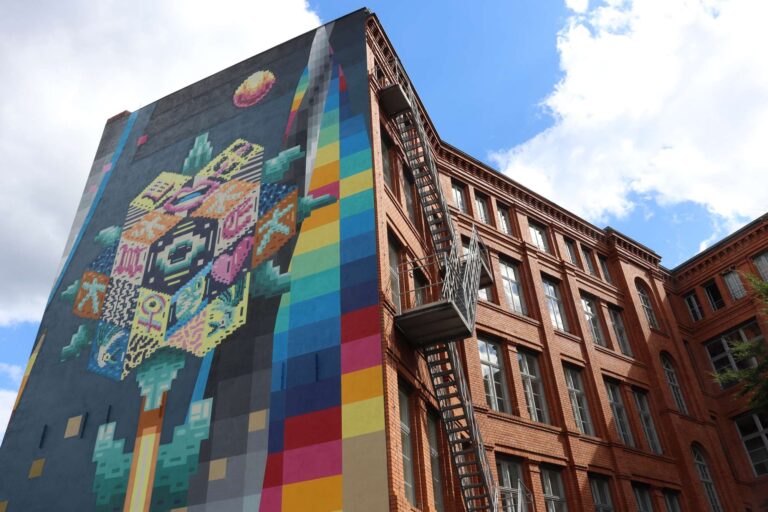This interview was originally published on January 23, 2022, in Lazo Magazine’s weekly newsletter. It’s a conversation between Lazo Magazine’s founder and Editor-In-Chief, Cristina Maza, and Rahim Hamid, an Ahwazi writer and human rights activist currently living in exile. The opinions expressed here belong to Rahim alone.
The Ahwazi Arabs are one of Iran’s largest minority groups.
Cristina: When people think of Iran, they often think of the Persian population. What other ethnic groups live in the country?
Rahim: Iran is ethnically and culturally diverse, with a population consisting of several ethnicities, including Azerbaijani Turks, Ahwazis, Kurds, Turkmen, Baluchis, and Caspians, in addition to its better-known Persian population.
The non-Persian ethnicities, in fact, collectively make up around 70% of the population. Despite this diversity, the Persian race, culture, and identity are promoted as dominant and superior.
Like the Shah, the Islamic Republic adheres to an ethnocentric state model instead of promoting common interests and celebrating diverse cultures.
Under the monarchy and the Khomeinists, Iran expected the non-Persian ethnicities to give up their distinct identities altogether and consider themselves Persian in dress, language, cultural attributes, and so forth.
But even if they are fully committed to forgetting their history and identity, they still face discrimination and oppression based on ethnic origin.
Non-Persians, therefore, are expected to adhere to contradictory expectations: to avoid identifying themselves by their cultural origin even as they are routinely stigmatized due to that same origin. It is, to be blunt, institutionalized racism.
Cristina: Where are you from in Iran, and what is day-to-day life like there?
Rahim: The Ahwazi Arab ethnic minority has inhabited the south and southwest of Iran for centuries. The Arab population calls it the Ahwaz region. The region is rich in oil, gas, water resources, and fertile agricultural lands.
But unfortunately, its native Ahwazi Arab population suffers from decades of oppression and discrimination. For example, Ahwazi Arabs are constantly denied employment in the oil and petrochemical industries that have risen in the areas they populate.
At the same time, Persian speakers are allocated the majority of jobs, varying from managers and engineers, even down to laborers. Thus, the educated Ahwazis, like the rest of the Ahwazi population, are being driven out of employment throughout the entire energy sector.
Any protests demanding reforms and an end to discrimination are met with – at best – empty promises by successive Iranian governments. More often, even the most peaceful protests are met with brutal and lethal force, particularly when the protesters are minorities.
Cristina: What can you tell me about the Ahwazi culture? Can you describe your music, language, and traditions?
Rahim: The Ahwaz culture is considered one of the most ancient cultures in the world. In the past, Ahwaz was called Elam, and it was the cradle of the Elamite and Maysani civilizations.
Ahwaz has a rich history of constructing buildings, monuments, and obelisks on which cuneiform writings were engraved, which depict the nature of life and prevailing culture in those ancient times.
In Ahwaz, there are a lot of monuments that contain colossal buildings called Ziggurat. They are stepped temples. Among the most prominent temples of this kind is Dur Untash Ziggurat, registered with UNESCO.

The Ahwazi people’s language is Arabic. In general, hospitality and generosity to guests are deeply rooted in the Ahwazi Arab culture and traditions. People treat guests with noticeable care and paramount attention.
Cristina: Were Ahwaz people ever free to express and celebrate their cultural heritage in Iran?
The Reza Pahlavi regime and its successors instituted an effort to eradicate the Ahwazi’s Arab history and culture, changing the names of streets and districts, cities, towns and villages, and even natural landmarks such as rivers and hills from Arabic to Farsi.
Following the 1979 ‘Islamic Revolution,’ the new theocratic regime did not change this policy of cultural eradication but rather accelerated it. Ahwazis were subsequently forbidden from giving their children Arabic names and were forced to choose from a list of Farsi names approved by the regime.
Both the Pahlavi dynasty and the Khomeinist regime actively worked to change the region’s demographic composition to eliminate its Arab character and subsume it into a Greater Iran.
For Ahwazis, 1925 marked the beginning of the brutal occupation and oppressive suppression, which has continued since, characterized by cultural, political, economic, and linguistic injustice and oppression based on virulently anti-Arab bigotry and prejudice.
Cristina: Do the Ahwazis have an activist community, either in Iran or in exile?
Any attempt by Ahwazi people to protest at the horrendous injustices inflicted by successive regimes is brutally crushed.
On April 15, 2005, Ahwazis across the region in Ahwaz, Hamidiyeh, Ma’shour, Howeyzeh, and other cities, towns and villages, and staged peaceful anti-regime demonstrations unprecedented in their size.
They were protesting the revelations in a leaked letter from a senior regime official. That senior regime official said the regime wished to reduce the Arab population in the region further. In the letter, reportedly from Mohammed Ali Abtahi, the head of the office of then-president Mohammed Khatami, the author detailed a plan to reduce the Arab population within ten years.
The regime was enraged by the demonstrations, with around 60 protesters killed and hundreds more injured and arrested by security forces and police.
Anti-Arab discrimination permeates every facet of life for the Ahwazi people.
For the rulers in Tehran, this culture of discrimination and denial of the most fundamental rights in every area of life ensures that Ahwazis remain powerless and marginalized.







